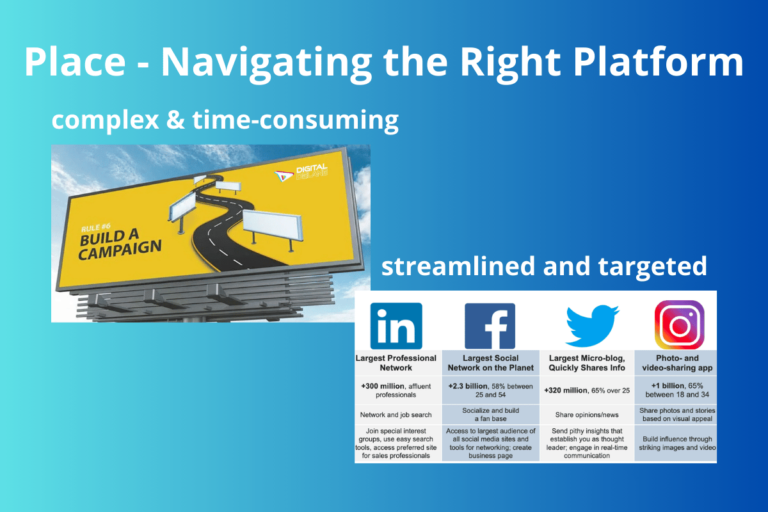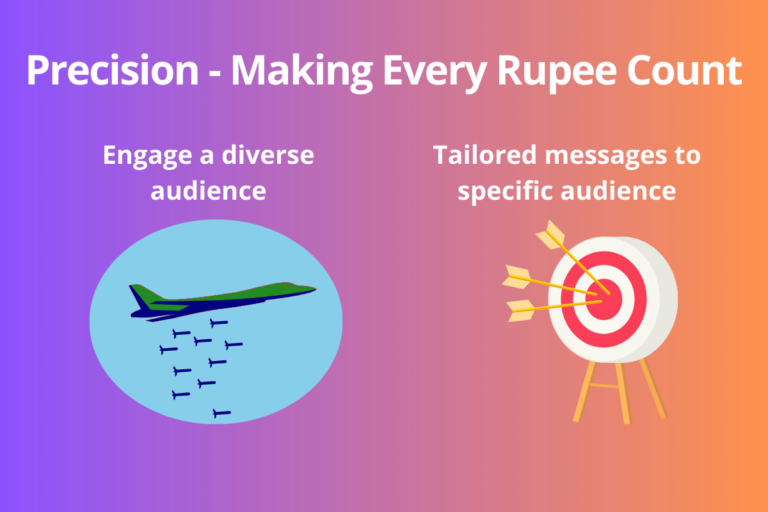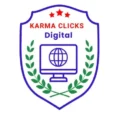Table of Contents
ToggleIntroduction
The dilemma highlighting the growing gap between Traditional and Digital Marketing. Why your expensive newspaper ad didn’t drive the results you expected?
While traditional methods like print and TV ads have been trusted for decades, they often fall short in targeting the right audience or tracking success. In contrast, digital marketing offers flexibility, precision, and real-time data, enabling businesses to optimize campaigns efficiently.
In this blog, we’ll delve into the world of traditional and digital marketing, exploring their key differences and understanding why digital marketing has emerged as the preferred choice for businesses in today’s competitive landscape
Understanding Traditional and Digital Marketing
Traditional Marketing
Traditional marketing is a tried-and-true method of reaching potential customers through offline channels. It involves using conventional methods to promote products and services to consumers.
It operates as a one-way communication channel, where businesses push their messages to a wide audience without expecting immediate feedback. This can make it difficult to measure the effectiveness of traditional marketing campaigns.
While it may seem outdated in the digital age, traditional marketing still holds its ground for many businesses.
Traditional marketing relies heavily on mass media to reach a wide audience. Examples of traditional marketing channels include:
Print advertisements: Newspapers, magazines, and flyers
Billboards: Large outdoor advertisements
Radio and TV commercials: Audio and visual advertisements on broadcast media
Direct mail: Printed advertisements sent through the postal service
While highly effective in reaching large, diverse audiences, traditional marketing often lacks the personalization and real-time engagement that modern consumers seek.
Digital Marketing
Digital marketing involves promoting products and services through a wide range of digital channels and electronic technologies. It leverages a wide array of platforms such as websites, social media, search engines, email marketing, mobile apps, and digital content like videos, blogs, and podcasts.
The key strength of digital marketing lies in its ability to engage with customers in real time, providing personalized and targeted messaging. By using data analytics, businesses can track performance, measure ROI, and adjust strategies on the fly.
Digital marketing allows businesses to connect with a global audience, offering flexibility and scalability like never before.
Traditional vs. Digital: A Deep Dive into Marketing Effectiveness

In today’s fast-paced digital world, the lines between traditional and digital marketing are blurring. While traditional methods have served businesses well for decades, digital marketing offers a host of advantages that make it a compelling choice for modern marketers.
As we move forward, it’s essential to understand the key differences between traditional and digital marketing across various critical aspects. This would help in understanding why digital marketing is emerging as the preferred option for many businesses.
Product: A Showcase of Limitations

Traditional marketing often faces constraints when showcasing a wide range of products in a single advertisement. Whether it’s a print ad, billboard, or brochure, there’s a limit to how many products can be effectively displayed without creating clutter or compromising readability.
A print ad, billboard, or handout showcasing multiple products would likely result in a cluttered and confusing layout diluting the message. This lack of flexibility can make it difficult for businesses to highlight the breadth of their offerings.
Even when multiple products are featured, as seen on billboards or in print, the layout often appears cluttered, and text or visuals can become hard to read or digest, reducing the overall impact.
In Digital marketing, these limitations vanish. Multiple creatives can be developed for each product, tailored to different customer segments.
Through techniques like carousel ads and product catalogues, businesses can display multiple products in a single advertisement, allowing customers to scroll through various product options effortlessly, ensuring maximum visibility without overwhelming the viewer. This flexibility allows for dynamic, engaging presentations that keep audiences interested while displaying a complete product lineup.
Additionally, digital marketing platforms provide opportunities for personalized product recommendations based on customer preferences and browsing history. This helps customers discover products that are most relevant to their needs, increasing the chances of conversion.
People: Targeting the Right Audience

In traditional marketing, ads are broadcast to a broad audience without control over who sees them. Whether it’s a TV commercial, print ad, or flyer, the message is exposed to everyone—regardless of their relevance to the product. For example, a car ad in a newspaper might reach readers who aren’t even considering buying a car.
With digital marketing, you can create highly specific campaigns based on factors such as age, gender, location, language, interests, and even online behaviours. You can reach people who are actively searching for your products or services, making your marketing efforts much more effective.
Imagine trying to reach a specific group of people in a crowded stadium using a megaphone. You’d be shouting into the void, hoping your message lands on the right ears. That’s the challenge of traditional marketing.
Digital marketing, on the other hand, is like having a laser pointer. You can precisely target your message to the exact people who are most likely to be interested.
Social media platforms like Facebook or Instagram, and tools like Google Ads, offer advanced targeting features that help businesses connect directly with their ideal customers. This precision ensures that marketing messages are seen by the right people, improving the chances of conversion and making campaigns far more cost-effective.
Place: Navigating the Right Platform

Choosing the right platform is a critical decision in any marketing strategy.
In traditional marketing, selecting the place for promotion can be a complex, time-consuming process.
For example, a tractor dealer might want to set up billboards on roads leading to a key market (Mandi). However, there might be multiple roads leading to the market from different towns, making it challenging to decide where to place ads for maximum visibility.
Each decision requires research, negotiation, and significant investment, and even then, the audience is still generalized with no guarantee of targeting the right customers.
In digital marketing, the process is more streamlined and targeted. There are a few key platforms, each catering to a specific audience, allowing businesses to reach their desired customers more effectively. For instance, LinkedIn is ideal for reaching professionals and corporate clients, while Facebook serves a broader demographic. Instagram and Snapchat are favoured by younger audiences, and YouTube attracts users who prefer long-form content, particularly middle-aged groups. By understanding the characteristics of each platform, businesses can easily choose where to run their campaigns to engage the right audience.
For example, an agri-input trader might use Facebook to target rural users while a B2B software company might focus on LinkedIn. This flexibility and precision make digital platforms far more adaptable for modern marketing needs.
Customization: Tailoring Your Message

Customization is a vital component of effective marketing strategies.
In traditional marketing, advertisements tend to be generic, often designed to appeal to a broad audience. This approach poses a significant challenge when businesses cater to multiple target customer profiles. Since traditional ads are not tailored to specific segments, they risk alienating potential customers who might feel the message doesn’t resonate with their needs or preferences.
For example, a print ad for a clothing brand might feature a generic model that doesn’t resonate with all potential customers.
Conversely, digital marketing excels in its ability to deliver personalized content tailored to various customer profiles. Advertisers can craft unique creatives for different segments, ensuring that each message speaks directly to the intended audience. This not only enhances customer engagement but can also boost conversion rates, as audiences are more likely to respond to content that directly addresses their individual needs and interests.
For instance, a travel company can use digital marketing to target customers based on their preferred destinations, travel styles, and budget. This enables them to deliver highly relevant travel recommendations and offers, increasing the likelihood of conversion.
Brand Visibility: Standing Out in the Crowd

Brand visibility is a crucial aspect of any marketing strategy.
Traditional marketing often involves competing for attention in a crowded marketplace. Your advertisement might be lost among a sea of other promotions, making it difficult for your target audience to notice and remember your brand.
For instance, on a newspaper page filled with various ads, it can be challenging for a brand to stand out. Similarly, during a commercial break on television or in a movie theatre, a brand’s message might get drowned out by multiple other commercials. Moreover, there’s no guarantee that the intended audience even sees the ad; many readers skip past ad pages, moviegoers leave during commercial breaks, and viewers often mute or change channels during ads. This uncertainty can lead to wasted marketing efforts and resources.
Digital marketing, on the other hand, offers a more targeted and effective way to increase brand visibility.
Social media platforms allow you to embed your advertisements within the content that your target audience is already consuming. Advertisements can be seamlessly integrated into social media feeds, appearing between posts, reels, or as pre-rolls on videos, making them harder to ignore. Additionally, digital ads are strategically placed in apps and platforms frequented by the target audience, maximizing the likelihood of exposure.
Additionally, digital marketing platforms offer advanced targeting capabilities that allow you to reach specific demographics, interests, and behaviours. This ensures that your ads are seen by the right people, increasing the likelihood of brand awareness and recall.
Precision: Making Every Rupee Count

Precision is a vital factor in any marketing strategy, as it determines how effectively a brand can connect with its desired audience.
In traditional marketing, the ability to target specific demographics is often limited. Traditional media, such as newspapers, radio, and television, typically cater to a broad audience, making it challenging to customize messages for distinct segments. A newspaper advertisement for a luxury watch might reach a wide range of readers, including those who can’t afford such an expensive item. Only a fraction will fit the brand’s target demographic. This lack of precision can lead to wasted advertising spend, resulting in campaigns that miss the mark and fail to resonate with potential customers.
Think of it like trying to hit a bullseye with a shotgun: you might hit something, but it’s unlikely to be your intended target.
In contrast, digital marketing leverages data analytics and sophisticated algorithms to identify and reach potential customers based on their demographics, interests, and online behaviours. This targeted approach allows you to tailor your marketing messages to the people most likely to be interested in your products or services.
Imagine being able to show your ads only to people who have recently searched for “luxury watches” or visited your competitors’ websites. This level of precision is simply not possible with traditional marketing.
Reach: Expanding Your Horizons

Traditional marketing often faces limitations in reaching a wide audience, especially for local businesses and rural enterprises. For example, newspapers might have different editions for different regions, but they still have a limited reach compared to digital channels. Similarly, billboards and other outdoor advertising are confined to specific locations, making it difficult to reach a broader audience.
Digital marketing, on the other hand, has the power to break down geographical barriers and reach customers across the globe. With the widespread availability of internet connectivity, even in remote areas, digital marketing channels like social media, search engines, and email can connect businesses with customers from all walks of life.
This global reach is particularly advantageous for local businesses that want to expand their customer base beyond their immediate region. Digital marketing allows them to tap into new markets and reach customers who may never have heard of their business through traditional channels.
For example, a small agribusiness can now run targeted social media campaigns that engage farmers in remote villages, providing them with valuable information and promoting their products directly to the intended audience. This capability not only enhances visibility but also facilitates meaningful connections between brands and their target customers.
Response Time: Responding to Trends

Traditional marketing often suffers from a significant delay in measuring results. It can take weeks or even months to gather data on the effectiveness of print ads, billboards, or radio commercials. This slow response time makes it challenging to make timely adjustments to marketing campaigns.
For example, if a seasonal promotion doesn’t generate the expected interest, the delay in feedback means that any necessary changes can’t be implemented swiftly, potentially resulting in lost sales opportunities.
Digital marketing, on the other hand, provides real-time insights into the performance of your campaigns. Through analytics tools, you can track metrics like clicks, impressions, conversions, and engagement rates in real-time. This allows you to make data-driven decisions and optimize your campaigns as needed.
For instance, an e-commerce company can simultaneously test two versions of a promotional banner, analyzing which one drives more traffic or sales within hours. This capacity for rapid iteration not only enhances campaign effectiveness but also allows businesses to pivot their strategies in response to emerging trends or customer preferences.
Measurement & Analytics: Data-Driven Decisions

Traditional marketing often struggles with measurement, making it difficult to determine the return on investment (ROI) of campaigns.
Marketers rely on general metrics, such as overall sales or customer surveys, which can be influenced by various factors unrelated to specific marketing efforts. This ambiguity complicates resource allocation, often leading to inefficient spending on channels that may not yield the best results. Hence there is a difficulty in assessing campaign success.
Digital marketing, on the other hand, offers a wealth of detailed analytics and metrics that allow marketers to precisely evaluate their campaigns. From impressions and click-through rates to conversion rates and customer lifetime value, digital marketing provides a comprehensive view of campaign performance.
This data-driven approach enables marketers to continuously optimize their strategies and make informed decisions based on real-world results. By tracking key metrics, businesses can identify what’s working and what’s not, and make necessary adjustments to improve their marketing efforts.
Costing: Leveraging Value in Marketing Investments

Traditional marketing can be a costly endeavour, especially for small businesses. Print advertising, television commercials, and other traditional channels often come with hefty price tags.
For instance, producing a high-quality jingle or a visually captivating TV ad can run into lakhs of rupees, and the effectiveness of these investments may remain unclear. The financial commitment typically remains fixed, making it difficult to gauge the actual return on investment (ROI).
Digital marketing, on the other hand, offers a more scalable and affordable approach. Platforms like social media advertising, email marketing, and pay-per-click (PPC) campaigns allow businesses to set their own budgets and adjust their spending as needed.
Small businesses can initiate campaigns with as little as Rs. 200-300, allowing them to test the waters before scaling their efforts. This affordability enables small and medium enterprises (SMEs) to compete with larger corporations on a level playing field, maximizing reach and impact without the risk of overwhelming financial strain.
For example, a local bakery can utilize Instagram ads to effectively promote special offers, reaching a targeted audience without significant expenditure.
Conclusion: The Future of Marketing is Digital
In conclusion, the digital landscape has transformed the way businesses reach and engage with their target audience. While traditional marketing methods still have a place in certain contexts, digital marketing offers a host of advantages that make it a compelling choice for modern businesses.
From improved targeting and measurement to cost-effectiveness and flexibility, digital marketing empowers businesses to achieve their marketing goals more effectively. By embracing digital marketing, businesses can stay ahead of the curve, build strong relationships with their customers, and drive long-term success.
It’s time to embrace the digital transformation and unlock the full potential of your business through effective digital marketing strategies.

Very useful information
Thanks Ma’am
Thank You Ma’am